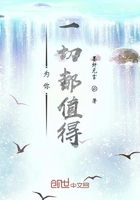What is the Sanctuary?
The scripture which above all others had been both the foundation and the central pillar of the advent faith was the declaration: "Unto two thousand and three hundred days; then shall the sanctuary be cleansed." Daniel 8:14.
These had been familiar words to all believers in the Lord's soon coming. By the lips of thousands was this prophecy repeated as the watchword of their faith. All felt that upon the events therein foretold depended their brightest expectations and most cherished hopes. These prophetic days had been shown to terminate in the autumn of 1844. In common with the rest of the Christian world, Adventists then held that the earth, or some portion of it, was the sanctuary. They understood that the cleansing of the sanctuary was the purification of the earth by the fires of the last great day, and that this would take place at the second advent. Hence the conclusion that Christ would return to the earth in 1844.
But the appointed time had passed, and the Lord had not appeared. The believers knew that God's word could not fail; their interpretation of the prophecy must be at fault; but where was the mistake? Many rashly cut the knot of difficulty by denying that the 2300 days ended in 1844. No reason could be given for this except that Christ had not come at the time they expected Him. They argued that if the prophetic days had ended in 1844, Christ would then have returned to cleanse the sanctuary by the purification of the earth by fire; and that since He had not come, the days could not have ended.
To accept this conclusion was to renounce the former reckoning of the prophetic periods. The 2300 days had been found to begin when the commandment of Artaxerxes for the restoration and building of Jerusalem went into effect, in the autumn of 457 B.C. Taking this as the starting point, there was perfect harmony in the application of all the events foretold in the explanation of that period in Daniel 9:25-27. Sixty-nine weeks, the first 483 of the 2300 years, were to reach to the Messiah, the Anointed One;and Christ's baptism and anointing by the Holy Spirit, A.D. 27, exactly fulfilled the specification. In the midst of the seventieth week, Messiah was to be cut off. Three and a half years after His baptism, Christ was crucified, in the spring of A.D. 31. The seventy weeks, or 490 years, were to pertain especially to the Jews. At the expiration of this period the nation sealed its rejection of Christ by the persecution of His disciples, and the apostles turned to the Gentiles, A.D. 34. The first 490 years of the 2300 having then ended, 1810 years would remain. From A.D. 34, 1810 years extend to 1844. "Then," said the angel, "shall the sanctuary be cleansed." All the preceding specifications of the prophecy had been unquestionably fulfilled at the time appointed.
With this reckoning, all was clear and harmonious, except that it was not seen that any event answering to the cleansing of the sanctuary had taken place in 1844. To deny that the days ended at that time was to involve the whole question in confusion, and to renounce positions which had been established by unmistakable fulfillments of prophecy.
But God had led His people in the great advent movement; His power and glory had attended the work, and He would not permit it to end in darkness and disappointment, to be reproached as a false and fanatical excitement. He would not leave His word involved in doubt and uncertainty.
Though many abandoned their former reckoning of the prophetic periods and denied the correctness of the movement based thereon, others were unwilling to renounce points of faith and experience that were sustained by the Scriptures and by the witness of the Spirit of God. They believed that they had adopted sound principles of interpretation in their study of the prophecies, and that it was their duty to hold fast the truths already gained, and to continue the same course of Biblical research. With earnest prayer they reviewed their position and studied the Scriptures to discover their mistake. As they could see no error in their reckoning of the prophetic periods, they were led to examine more closely the subject of the sanctuary.
In their investigation they learned that there is no Scripture evidence sustaining the popular view that the earth is the sanctuary; but they found in the Bible a full explanation of the subject of the sanctuary, its nature, location, and services; the testimony of the sacred writers being so clear and ample as to place the matter beyond all question. The apostle Paul, in the Epistle to the Hebrews, says: "Then verily the first covenant had also ordinances of divine service, and a worldly sanctuary. For there was a tabernacle made; the first, wherein was the candlestick, and the table, and the shewbread; which is called the sanctuary. And after the second veil, the tabernacle which is called the holiest of all; which had the golden censer, and the ark of the covenant overlaid round about with gold, wherein was the golden pot that had manna, and Aaron's rod that budded, and the tables of the covenant; and over it the cherubims of glory shadowing the mercy seat."Hebrews 9:1-5.















